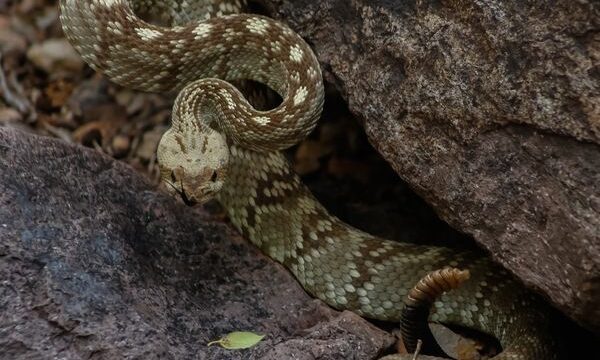From our friends at BLM:
It’s officially rattlesnake season! We’ve seen a number of snakes throughout the Organ Mountains Desert Peaks National Monument.
While some may fear this news, we encourage trail visitors to try to appreciate this ancient and beautiful beast, while also staying safe, and knowing what to do in worst case scenarios.
While there are some precautions that you need to take to ensure your safety on the trail, it’s good to remember that snakes are just afraid of you as you are of them.
Snake encounters are uncommon, and snake bites even more so, but it’s always important to read up on snake safety on the trail, just in case you come across one of these slithery creatures.
Being aware of what wildlife you may encounter during your hike is an essential step towards preparedness, just like making sure you’ve packed enough food and water and checking the weather conditions.
Here are a few choice tips:
Please consider:
– Rattlesnakes tend to avoid humans. They warn us when we’re too close, and they generally strike only when threatened or deliberately provoked.
Be safe:
-Wear sturdy shoes, gaiters or long pants. Avoid open-toed shoes.
– Stay on the trail and keep your pets on trial. Snakes are a lot easier to spot and avoid on trails than they are bushwhacking through shrubs and grass.
– If you hear a rattlesnake: Freeze, locate the sound, and move away slowly.
– If you don’t want to encounter rattlesnakes, use trails early in the morning, before the ground heats up. Rattlesnakes are mainly active between temperatures of 70 to 90 degrees Fahrenheit.
If you (or your dog) get bit:
– Try to remain calm. Try to rest. Decreasing blood flow will decrease the flow of venom in your body.
– Seek medical help. Call 911. If you don’t have phone service, try to find another hiker to make a call where they can. If you need to walk out, do so slowly, trying to keep your body temperature stable.
– Wash the bite area with soap and water or an antiseptic wipe.
You may have heard that a reliable indicator of whether a snake is venomous is their head shape and color, but this myth needs to be debunked, as there are too many variables to take into consideration to determine the venomousness of a snake.
Before heading out, check out local guidebooks and field guides, or contact a park ranger to find out which species you may encounter.




 \n
\n